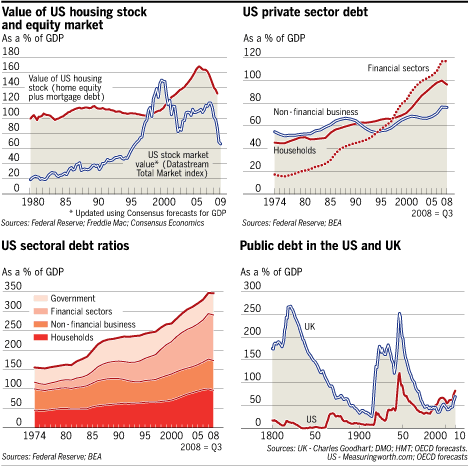“Dating back to work on the random walk hypothesis by French economist Louis Bachelier (1870-1946), the efficient market hypothesis asserts that stock market prices are the best available estimates of the real value of shares since the market has taken account of all available information on an individual stock.”
– Economy Professor
Now from New York Times Magazine, which had an interesting 10 page spread about Risk valuation last Saturday:
VaR is often measured daily and rarely extends beyond a few weeks, and because it is a very short-term measure, it assumes that tomorrow will be more or less like today. Even what’s called “historical VaR” — a variation of standard VaR that measures potential portfolio risk a year or two out, only uses the previous few years as its benchmark. As the risk consultant Marc Groz puts it, “The years 2005-2006,” which were the culmination of the housing bubble, “aren’t a very good universe for predicting what happened in 2007-2008.”
How are these two phenomena related? The risk models our world of finance has been relying upon for several years are grounded in the Efficient Market Hypothesis; VaR models – or models which price risk – would not function without the corollary of the underlying asset being priced properly. We took comfort in this convenient theory, that everything is priced appropriately, all the time.
The counter to this argument is not another theory, but a series of real life outliers. If markets are efficient, How does George Soros continually compound his fortune by trading according to his boom/bust empiricism (like shorting the British Pound)? Warren Buffet also acknowledges fault with this theory: “I would be a bum on the street with a tin cup if the markets were always efficient.”
Every theory has shortcomings, and the admitted shortcoming of the Efficient Market Hypothesis is one of “black swans”, or in economic terms, exogenous shocks. These are events which cannot be predicted, ones which are often described as lying outside a 99% confidence interval, and ones which continually disprove the efficiency of market pricing – especially during times of panic.
The second glaring shortcoming is one which lies about the applications of the EMH, or one of our perception. One assumption of the hypothesis, like an assumption in micro-economic theory, is that the participants are completely rational (much like human calculators). This assumption has proven to hold under times of tranquility – like the times LTCM succeeded in making money – but during times of deception and opacity, many of us are hopelessly irrational.
To quote Michael Lewis’s most recent book, Panic!, on the pricing of Bear Stearns:
“If the market got the value of Bear Stearns so wrong, how can it possibly believe it knows even the approximate value of any Wall Street firm?” (P. 342)
The pillar of the EMH that comes tumbling down in times like today is “known information”…On the surface, who is to say that Bear’s balance sheet was all that bad? I’d like to believe we could extrapolate everything from the footnotes (never mind having everyone read them), but the population of people who called for the failure of Bear Stearns in 2006 lie far outside the depths of the “normal distribution.” Furthermore, here’s a real life example: how could the Nasdaq be accurately priced at 1,400 in 1997; at 5,000 in 2000; and back at 1,400 in 2002?
All of this is to argue that the notion of efficient markets, which we have taken shelter in for much of our modern financial history, stands paralyzed in times of uncertainty; this would provide insight into why panic ensues at the very signal that we are “in the dark” concerning anything (this could also be a reflection of our poor sentiment; the constant belief that we will be disappointed by Wall Street is becoming a part of our psychology). This would also provide an explanation for our dependence on models as a “crutch”, to grant us what has turned out to be a false sense of security by quantifying risk with numerical values.
The fallout of the sub-prime mortgage crisis has uncovered many of the issues with deriving models after this hypothesis – the only problem is, we haven’t come up with anything better. VaR were used heavily in the late 1990’s by none other than LTCM, but as the NYT article points out:
Firms viewed it as a human failure rather than a failure of risk modeling. The collapse only amplified the feeling on Wall Street that firms needed to be able to understand their risks for the entire firm. Only VaR could do that. (Page 7)
We then reverted back to their use.
I will end with a phrase which has time and again been a sure way to see oneself proven wrong – Maybe this time it’s different.
Read Full Post »



